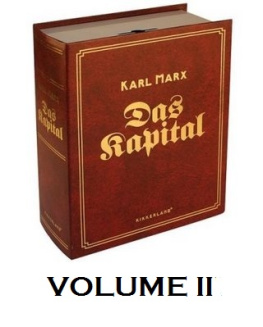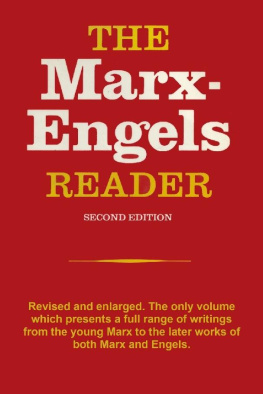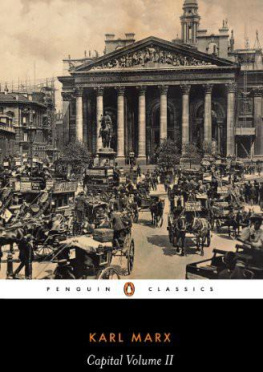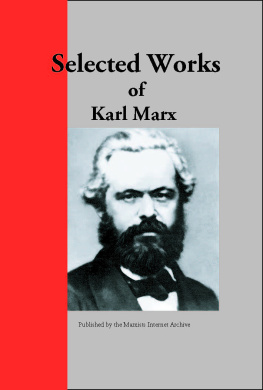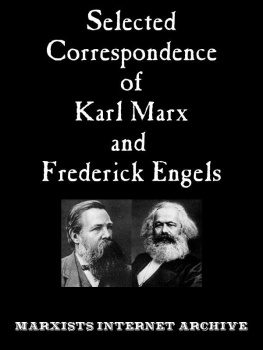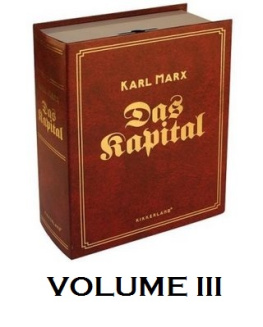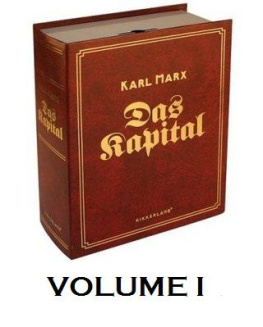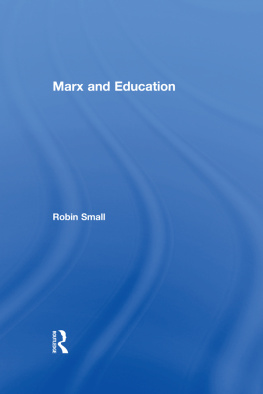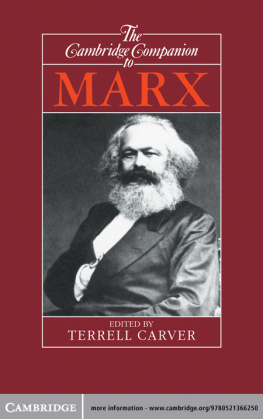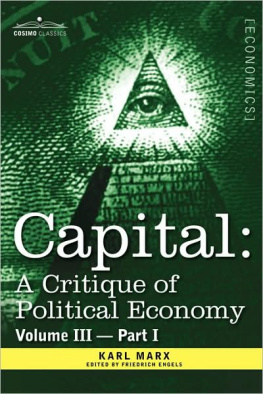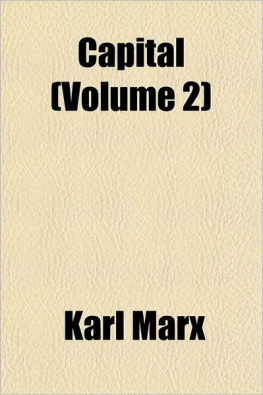Karl Marx - Capital Volume II
Here you can read online Karl Marx - Capital Volume II full text of the book (entire story) in english for free. Download pdf and epub, get meaning, cover and reviews about this ebook. year: 1885, genre: Detective and thriller. Description of the work, (preface) as well as reviews are available. Best literature library LitArk.com created for fans of good reading and offers a wide selection of genres:
Romance novel
Science fiction
Adventure
Detective
Science
History
Home and family
Prose
Art
Politics
Computer
Non-fiction
Religion
Business
Children
Humor
Choose a favorite category and find really read worthwhile books. Enjoy immersion in the world of imagination, feel the emotions of the characters or learn something new for yourself, make an fascinating discovery.
- Book:Capital Volume II
- Author:
- Genre:
- Year:1885
- Rating:3 / 5
- Favourites:Add to favourites
- Your mark:
- 60
- 1
- 2
- 3
- 4
- 5
Capital Volume II: summary, description and annotation
We offer to read an annotation, description, summary or preface (depends on what the author of the book "Capital Volume II" wrote himself). If you haven't found the necessary information about the book — write in the comments, we will try to find it.
Capital Volume II — read online for free the complete book (whole text) full work
Below is the text of the book, divided by pages. System saving the place of the last page read, allows you to conveniently read the book "Capital Volume II" online for free, without having to search again every time where you left off. Put a bookmark, and you can go to the page where you finished reading at any time.
Font size:
Interval:
Bookmark:
Capital: Volume Two Study Guide
Karl Marx's

A Critique of Political Economy
Book Two: The Process of Circulation of Capital
Written: by Marx 1863 - 1878 and edited for publication by Engels in 1885;
Published: this revised second edition in 1893;
Source: Progress Publishers, Moscow 1956, translated by I. Lasker;
Transcribed for the Internet: by proletarian revolutionariesin the Philippines;
HTML mark-up: in 1997 for MEIA by Doug Hockin;
Proofread: and corrected by Chris Clayton 2007
eBook prepared by J Eduardo Brissos (2011).
PDF Version of whole book.
(Frederick Engels)
to the Second Edition (Frederick Engels)
Part One:
The Metamorphoses of Capital and their Circuits
Chapter 1:
1.
2.
3.
4.
Chapter 2:
1.
2.
3.
4.
Chapter 3:
Chapter 4:
Chapter 5:
Chapter 6:
(a)
(b)
(c)
(a)
(b)
Part Two:
The Turnover of Capital
Chapter 7:
Chapter 8:
1.
2.
Chapter 9:
Chapter 10:
The Physiocrats and Adam Smith
Chapter 11:
Chapter 12:
Chapter 13:
Chapter 14:
Chapter 15:
1.
2.
3.
4.
5.
Chapter 16:
1.
2.
3.
Chapter 17:
1.
2.
Part Three:
The Reproduction and Circulation of the Aggregate Social Capital
Chapter 18:
1.
2.
Chapter 19:
1.
2.
(a)
(b)
(c)
(d)
(e)
Chapter 20:
1.
2.
3.
4.
5.
(Chapter 20: )
6.
7.
8.
9.
10.
(Chapter 20: )
(a)
(b)
(c)
(Chapter 20: )
12.
13.
Chapter 21:
(a)
(b)
(c)
(Chapter 21: )
(a)
(b)
(c)
Study Guide
EXTERNAL LINKS: Political Economists |Original German language textat MLWerke |Economic Works
Letters on Capital |Marx/Engels Archive |Marxists Internet Archive

It was no easy task to put the second book of Capital in shapefor publication, and do it in a way that on the one hand would make ita connected and as far as possible complete work, and on the other wouldrepresent exclusively the work of its author, not of its editor. The greatnumber of available, mostly fragmentary, texts worked on added to the difficultiesof this task. At best one single manuscript (No. IV) had been revised throughoutand made ready for press. But the greater part had become obsolete throughsubsequent revision. The bulk of the material was not finally polished,in point of language, although in substance it was for the greater partfully worked out. The language was that in which Marx used to make hisextracts: careless style full of colloquialisms, often containing coarselyhumorous expressions and phrases interspersed with English and French technicalterms or with whole sentences and even pages of English. Thoughts werejotted down as they developed in the brain of the author. Some parts ofthe argument would be fully treated, others of equal importance only indicated.Factual material for illustration would be collected, but barely arranged,much less worked out. At conclusions of chapters, in the authors anxietyto get to the next, there would often be only a few disjointed sentencesto mark the further development here left incomplete. And finally therewas the well-known handwriting which the author himself was sometimes unableto decipher.
I have contented myself with reproducing these manuscripts as literallyas possible, changing the style only in places where Marx would have changedit himself and interpolating explanatory sentences or connecting statementsonly where this was absolutely necessary, and where, besides, the meaningwas clear beyond any doubt. Sentences whose interpretation was susceptibleof the slightest doubt were preferably copied word for word. The passageswhich I have remodelled or interpolated cover barely ten pages in printand concern only matters of form.
The mere enumeration of the manuscript material left by Marx for BookII proves the unparalleled conscientiousness and strict self-criticismwith which he endeavoured to elaborate his great economic discoveries tothe point of utmost completion before he published them. This self-criticismrarely permitted him to adapt his presentation of the subject, in contentas well as in form, to his ever widening horizon, the result of incessantstudy. The above material consists of the following:
First, a manuscript entitled Zur Kritik der politischen Oekonomie,containing 1,472 quarto pages in 23 notebooks, written in August 1861 toJune 1863. It is the continuation of a work of the same title, the firstpart of which appeared in Berlin, in 1859. It treats, on pages 1-220 (NotebooksI-V) and again on pages 1,159-1,472 (Notebooks XIX-XXIII), of the subjectsexamined in Book I of Capital, from the transformation of moneyinto capital to the end, and is the first extant draft there of. Pages973-1,158 (Notebooks XVI-XVIII) deal with capital and profit, rate of profit,merchants capital and money-capital, that is to say with subjects whichlater were developed in the manuscript for Book III. The themes treatedin Book II and very many of those which are treated later, in Book III,are not yet arranged separately. They are treated in passing, to be specific,in the section which makes up the main body of the manuscript, viz., pages220-972 (Notebooks VI-XV), entitled Theories of Surplus-Value. This sectioncontains a detailed critical history of the pith and marrow of PoliticalEconomy, the theory of surplus-value and develops parallel with it, inpolemics against predecessors, most of the points later investigated separatelyand in their logical connection in the manuscript for Books II and III.After eliminating the numerous passages covered by Books II and III, Iintend to publish the critical part of this manuscript as Capital,Book IV. This manuscript, valuable though it is, could be used only verylittle in the present edition of Book II.
The manuscript chronologically following next is that of Book III. Itwas written, at least the greater part of it, in 1864 and 1865. Only afterthis manuscript had been completed in its essential parts did Marx undertakethe elaboration of Book I which was published in 1867. I am now gettingthis manuscript of Book III in shape for press.
The following period after the publication of Book I is representedby a collection of four folio manuscripts for Book II, numbered I-IV byMarx himself. Manuscript I (150 pages), presumably written in 1865 or 1867,is the first separate, but more or less fragmentary, elaboration of BookII as now arranged. Here too nothing could be used. Manuscript III is partlya compilation of quotations and references to the notebooks containingMarxs extracts, most of them relating to Part I of Book II, partly elaborationsof particular points, especially a critique of Adam Smiths propositionson fixed and circulating capital and the source of profit; furthermorean exposition of the relation of the rate of surplus-value to the rateof profit, which belongs in Book III. Little that was new could be garneredfrom the references, while the elaborations for volumes II and III weresuperseded by subsequent revisions and had also to be discarded for thegreater part.
Manuscript IV is an elaboration, ready for press, of Part I and thefirst chapters of Part II of Book II, and has been used where suitable.Although it was found that this manuscript had been written earlier thanManuscript II, yet, being far more finished in form, it could be used withadvantage for the corresponding part of this book. All that was neededwas a few addenda from Manuscript II. The latter is the only somewhat completeelaboration of Book II and dates from the year 1870. The notes for thefinal editing, which I shall mention immediately, say explicitly: Thesecond elaboration must be used as the basis.
Font size:
Interval:
Bookmark:
Similar books «Capital Volume II»
Look at similar books to Capital Volume II. We have selected literature similar in name and meaning in the hope of providing readers with more options to find new, interesting, not yet read works.
Discussion, reviews of the book Capital Volume II and just readers' own opinions. Leave your comments, write what you think about the work, its meaning or the main characters. Specify what exactly you liked and what you didn't like, and why you think so.

